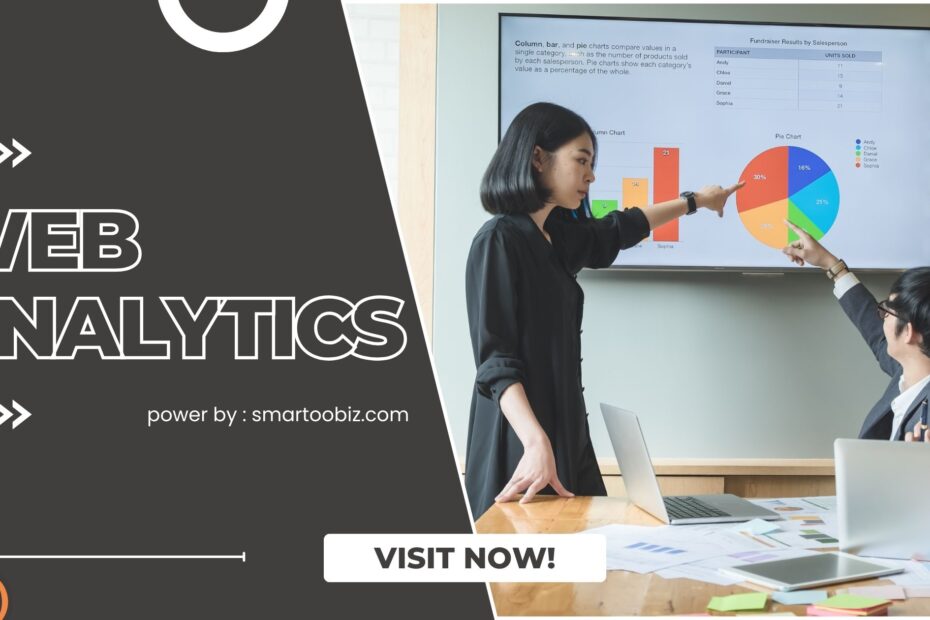Hey. I’m an admin. Welcome to my personal blog. this time I will talk about What is Web Analytics? Definition, Examples, & Tools. Maybe this doesn’t sound strange to you, but I deliberately wrote it on my personal blog here. I brought up this theme because I felt I had to get to know more about web analytics. If this sounds fun to you, let’s dive further into What is Web Analytics? Definition, Examples, & Tools. Maybe the table of content section will be a little different, but it doesn’t matter, the important thing is that the essence or the essence of this discussion is that you understand and understand. Okay without wasting much time let’s do it.
Read More : Conversion Rate Optimization: The Definitive Guide
See more : https://heylink.me/sabrina-zahira
Table Of Content
- How do web analytics work?
- Which is the best web analytics for E-commerce?
How do web analytics work?
Web Analytics is the measurement, collection, analysis, and reporting of Internet data for the purposes of understanding and optimizing Web usage.Insight on user behaviors and needs, and how the site meets those needs. Basic Steps of Web Analytics Process. Most web analytics processes come down to four essential stages or steps,[2] which are:
- Collection of data:
This stage is the collection of the basic, elementary data. Usually, these data are counts of things. The objective of this stage is to gather the data. - Processing of data into information:
This stage usually take counts and make them ratios, although there still may be some counts. The objective of this stage is to take the data and conform it into information, specifically metrics. - Developing KPI:
This stage focuses on using the ratios (and counts) and infusing them with business strategies, referred to as key performance indicators (KPI). Many times, KPIs deal with conversion aspects, but not always. It depends on the organization. - Formulating online strategy:
This stage is concerned with the online goals, objectives, and standards for the organization or business. These strategies are usually related to making money, saving money, or increasing market share.

Another essential function developed by the analysts for the optimization of the websites are the experiments
- Experiments and testings:
A/B testing is a controlled experiment with two variants, in online settings, such as web development. The goal of A/B testing is to identify and suggest changes to web pages that increase or maximize the effect of a statistically tested result of interest. Each stage impacts or can impact (i.e., drives) the stage preceding or following it. So, sometimes the data that is available for collection impacts the online strategy. Other times, the online strategy affects the data collected.
Which is the best web analytics for ecommerce?
Analysis system has become a marketing personnel, CEO, SEO professionals indispensable tools. Not only does it provide data on how many views a particular page or Web site has, but it can help measure the success of certain marketing activities (from social media to sales communications), track the behavior of visitors on specific pages, and even signal the problem in most cases.
However, if you believe that the system provides the above data in a pure language, do not be deceived. In fact, it collects the necessary data that should be explained to understand how to work with your electronics store ideas.
- Matomo
Matomo is an open-source alternative to Google Analytics, with an almost identical set of features. Like Forbes, T Mobile, Sharp and other customers, it becomes a serious competitor to the product. Matomo provides all the features you might need to understand your site’s performance and metrics, it offers free and paid versions downloadable and corresponding hosting.
Benefits
- E-commerce tracking (products, orders, shopping cart updates, products and Categories Page view)
- Integrated plug-ins for Magento, Prestashop, Zen carts, malls, and since
- Advanced e-commerce reporting, including e-commerce activity log
- Easy to use
- Quick action
Matomo is a very good choice for users who are looking for a quick, intuitive analytics tool that has the functionality needed to analyze and report on E-commerce.
- Kissmetrics
Kissmetrics is a popular and widely used business analysis tool. It is well known that this is a very good construction funnel that is easy to interpret. One of the unique features of kissmetrics is path reporting, which picks out the most common steps between first access and transformation, so you can get a funnel that you never know about. While real-time tracking is limited to real-time views, Kissmetrics provides valuable insights into customer behavior that can reveal trends and tendencies over time.
Benefits
- Inumerous integration with Third-party tools, including Shopify, Magento, and Woocommerce
- Ability to create path reporting
- Track a visitor or event by adding a URL parameter to the link
- User search function, displaying complete user profile and operation history

- Rjmetrics
Rjmetrics is a SaaS business intelligence analytic tool with an emphasis on electronic сommerce. It tries to facilitate the process of collecting data and making conclusions by easily integrating marketing and analysis tools under a “roof”. You’ll see what channels bring you the most ROI, better understand customer behavior, and find out what the least and most profitable part is.
Benefits
- Integration with Shopify, Magento and shopping Carts
- Customizable Dashboard
- Intuitive interface
- Real-time Data visualization update
- Pre-built analysis packages for specific tasks
- Clicky
Clicky is a very popular analysis system for small and medium enterprises. It offers a rich set of features, ease of use and–it’s the main pride–real-time monitoring. Clicky provides all the data immediately, so you can respond to any changes faster.
Benefits
- Ajax and Flash event tracking
- Real-time target tracking
- Advanced Funnel Analysis
- Integrated plug-ins for some CMSS, forums and shopping carts such as PrestaShop and Magento.
- Woopra
Woopra, once a regular analysis tool, now claims to be a customer analytics system that collects data about each site visitor and displays it in a compact and very convenient manner. This is because the AppConnect feature synchronizes data from your customers at all points in the store-from the site to live chat and email.
Benefits
- Integration with Magento, Google docs, Woocommerce, Zendesk, etc.
- Customer data synchronization from all sources
- Notification of certain actions on the website, allowing you to respond immediately
- Advanced funnel and customer retention reports
- The ability to trigger operations in Third-party applications by setting rules and segments
- Real-time tracking
- Adobe Analytics
Let’s start with this giant Adobe, presented with a most complete set of features to monitor site visitors, happily incorporating intuitive interfaces that are really easy to use. Adobe Analytics often competes with Google in selecting a large company’s analytics system. As part of an enterprise-class software and Adobe marketing Cloud, it is easy to scale to meet all your requirements for measurement and reporting.
Benefits
- Real-time data and reports
- Mobile application analysis includes
- Advanced segmentation capabilities
- Easily expand the functionality required (video, social media analytics, etc.) Pioneer of the
- Webtrends
Webtrends began in far 1993. Despite its age, which is an ancient Internet term, this tool has been steadily growing and developing in ability, and is now one of the most commonly used analytical systems. Because of the layer model, Webtrends is suitable for all types of enterprises-from small to enterprise, because you can configure the desired set of options instead of paying the rest.
Benefits
- Storyboard mode provides data in a form that is easy to translate
- Powerful mobile and social data tracking capabilities
- Can be used in SaaS and build
- Mint
The freshness of this tool comes not only from the name and beauty of the interface. You will also be pleasantly surprised by the pricing model that they use. In fact, you only have to pay a fairly small fee ($ 30) for each site to start, and not to haunt any month after payment.
Benefits
- Reasonable Price
- Self-hosted (downloadable) software-your data is only yours
- Highly customizable Dashboard
- Compute traffic from image search
Okay, so the article I wrote about What is Web Analytics? Definitions, Examples, & Tools and we’ll see you in the next article. bye !!

Pingback: What is CRM? For Small Business CRM & Automation - smartoobiz.com